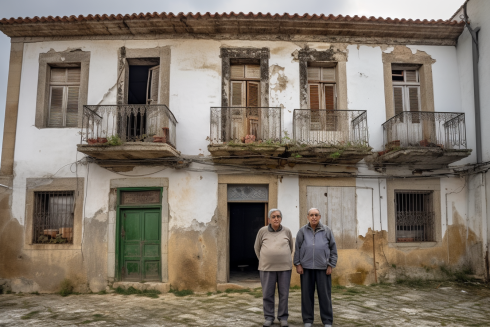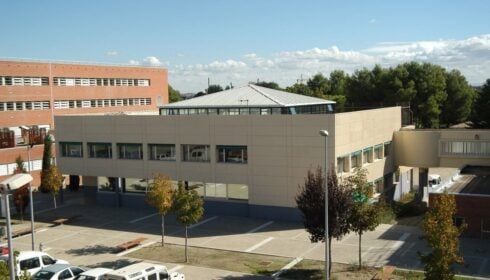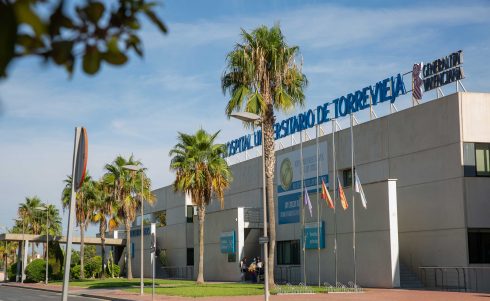AT a time when climate change is accelerating, and Spain is facing drought, the EU is amending its Energy Performance of Buildings Directive (EPBD) to make buildings carbon neutral.
During the next few years, this could cause problems for people wanting to sell or rent their property in Spain, by making the energy rating requirements more demanding.
The EPBD legislation isn’t new. It was first introduced in 2002 and has been updated several times since then – most recently in 2018. As anyone who has bought, sold, or rented a property will know, it requires that all buildings, including residential properties, have an Energy Performance Certificate (EPC) when they are constructed, sold, or leased. This requires a visit from a property professional who can assess your building and provide the relevant certification.
The EPC rates energy efficiency on a scale from A to G, with A being the most energy-efficient and G the least. It considers factors such as insulation, heating, ventilation, and lighting.
The plan is to make existing residential buildings net-zero by 2050. The EC proposes that existing residential buildings should be renovated to meet a minimum energy performance standard of F in 2030 and E in 2033 (whereas now, many might achieve G).
A ban on renting property that is energy-intensive already exists in France. In Belgium, owners who don’t renovate their inefficient properties may face administrative fines and rent indexation bans (being disallowed to increase the rent).
Is this the future in Spain, which is full of draughty ‘cortijos’ and townhouses with paper-thin roofs?

Standardising the ratings
The EC says it wants to standardise energy ratings across its member states. The worst category, G, would then accurately represent the 15% worst-performing buildings in the national building stock.
The scheme was first proposed in December 2021 – after eight national building renovation strategies submitted by member states fell short of the EC’s requirements.
This might remind you of the environmental stickers being introduced for vehicles in Spain, with Low Emission Zones (LEZs) and Zero Emission Zones (ZEZs) to be demarcated in major cities – another EU directive.
Granada estate agent, Mathew Wood, points out that “around 80% of the Spanish housing stock won’t comply.” With cars, it is currently around 75% – one in four.
Clearly, this is problematic for Spain – especially when these schemes are introduced with insufficient advance publicity. There are already calls for a raft of exemptions and tweaks for older properties.
The impact in Spain
Unless exemptions are made lawful, the potential impact in Spain, and particularly rural areas, is significant. Think of the thousands of fincas and townhouses built to poor standards. The old housing stock was constructed without energy efficiency in mind. As a result, properties may receive a low EPC rating (G).
There are other issues. For example, who would be responsible for a huge renovation in the case of a ‘herencia’ – where the parent dies, and five siblings jointly inherit the family home, and need to sell it so they can split the funds?
Over time, owners might find it increasingly difficult to sell energy-inefficient homes, as buyers become more aware of the legislation. Buyers might be put off by resale worries, or simply not want a home with higher-than-average electricity bills, or the heat from a woodburning stove goes straight up the chimney. Fossil fuel usage will be phased out anyway.
Although energy efficiency rules aren’t retrospectively applied to old properties (at present), more demanding building regulations already exist in Spain. The country has implemented the EPBD through its Technical Building Code (CTE). The CTE defines the energy efficiency requirements for buildings, including the EPC rating system.
Under the CTE, all new buildings must meet minimum energy efficiency requirements, and an EPC must be presented to the buyer or tenant when a building is sold or leased.
The CTE also rules that significant renovations or changes to a building must comply with the minimum energy efficiency requirements. Your renovation must include measures to achieve improvements, such as the installation of insulation, energy-efficient heating or cooling systems, or solar panels. If you want to change the use of your property, you could be facing a large bill.
However, Spain also offers financial incentives for energy efficiency improvements, such as grants and tax credits. It is worth asking your town hall if you can obtain help.


It there any chance that the changes won’t happen?
Estate Mathew Wood points out that the problem with old housing stock is so acute in Spain that there will be exceptions. Architect Julian Dominguez Arenas adds that the government requires funds from property transaction taxes, so it cannot kill the market. However, it’s unlikely that the legislation will halt.
The draft text of the EPBD will be voted at the European Parliament’s monthly assembly from March 13 to 16. One approved, it will form the basis for negotiation with the European Council, before it is finalised.
The EPBD then becomes a framework that EU member states must incorporate into their national laws. Each member state has some flexibility, but the basic principles remain the same. A bit like the car sticker scheme – it must be applied by all member states, or they will be fined.
As the EPBD is part of the EU’s broader efforts to reduce carbon emissions, over time, it may become even more stringent, rather than being watered down.
So, if you are thinking of selling, it’s time to start considering how you could improve the energy rating of your property, now not later.
Simple measures to go up one letter on your energy certificate
Install a pellet stove instead of your woodburner.
Install solar panels for energy.
Insulate the roof, walls, and floor – in that order of priority.
Improve the glass of your windows (to double glazing) and change old doors.
READ MORE
- UNDERGROUND COOL: As Spain’s temperatures rise, opt for a cave house
- Spain is introducing low emission zones in city centres that will prohibit 75% of vehicles. Does this affect your car?
- Improve your home’s efficiency with experts at Eclipse Energy
Click here to read more Property News from The Olive Press.








